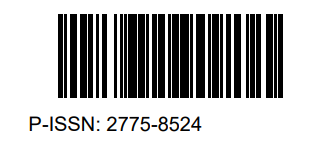A COGNITIVE STYLISTIC ANALYSIS OF SPORTS COMMENTARY
DOI:
https://doi.org/10.33477/lingue.v7i1.9440Keywords:
cognitive stylistics, cognitive metaphor, contextual frame theory, sports commentary, schema theoryAbstract
Cognitive stylistics always endeavors to scrutinize texts thoroughly to examine the application of theories and concepts in cognitive linguistics to enhance the understanding of texts that condense information in few words. The current research paper sets itself the task of answering the following question: what kind of cognitive stylistic features are implemented in sports commentary and how cognitive stylistic concepts enhance the interpretation of this kind of discourse. As such, the paper aims to identify the cognitive stylistic features implemented in sports commentary by adopting the threefold model of Jeffries and Mclntyre encompassing: schema theory, cognitive metaphor, and contextual frame theory. Accordingly, the study hypothesizes that cognitive metaphors are the most prevalent cognitive stylistic element implemented in sports commentary. The current paper is limited to the analysis of football commentary presented by two commentators who are John Helm and Peter Drury on four World Cup matches. Results of the analysis verify the above mentioned hypothesis.
References
Beard, A. (1998). The language of sport. Routledge.
Cotter, C. (2010). News talk: Investigating the language of journalism. Cambridge University Press.
Crisp, P. (2002). Metaphorical propositions: a rationale. Language and Literature: International Journal of Stylistics,11(1), pp. 7-16.
Crystal, D. (2003). The Cambridge Encyclopedia of the English Language.
Cambridge: Cambridge University Press.
Crystal, D., & Davy, D. (1983). Investigating English Style. London: Longman. Ferguson, C. A. (1983). Sports Announcer Talk: Syntactic Aspects of Register Variation.Language in Society, 12(2), pp.153-172.
FIFA (2023, May 7). FULL MATCH: Uruguay vs. Ghana 2010 FIFA World Cup. YouTube.https://www.youtube.com/watch?v=f5M9mzcjZ_8&list=PLfMgSA6jA3ct2ex HArhTx9h4GJrF7-OZQ&index=3.
FIFA (2023, May 7). FULL MATCH: Argentina vs. Mexico 2010 FIFA World Cup. YouTube.https://www.youtube.com/watch?v=FopM2tiNJO4&list=PLfMgSA6jA3ct 2exHArhTx9h4GJrF7-OZQ&index=4.
Gavins, J. and Steen, G. (2003). Cognitive Poetics in Practice. London: Routledge.
Hayes, S. C., Barnes-Holmes, D., and Roche, B. (Eds.). (2001). Relational Frame Theory: A Post-Skinnerian account of human language and cognition. New York: Plenum Press.
Jeffries, L., and McIntyre, D. (2010). Stylistics. Cambridge: Cambridge University Press.
Lakoff, G., & Johnson, M. (1980). Metaphors We Live by. Chicago: University of Chicago Press.
Lavric, E., Pisek, G., Skinner, A., & Stadler, W. (Eds.). (2008). The linguistics of football. Gunter Narr Verlag.
Leech, G. N. (1987). Meaning and the English Verb. London: Longman Lewandowski, M. (2012). “The language of online sports commentary in comparative
perspective”, in Lingua Posnaniensis, 54(1), pp.65-76.
Master, G. H. (2023, May 7). Peter Drury poetic commentary on Argentina Victory over France (FIFA world cup Qatar 2022). YouTube. https://www.youtube.com/watch?v=u9IBzBfQpUI
McIntyre, D. 2008. “Integrating Multimodal Analysis and the Stylistics of Drama: A Multimodal Perspective on Ian McKellen’s Richard III.” in Language and Literature, 17,4: 309-344.
Nurhikmah, N., & Purnamasari, N. I. (2025). Sharpening Kindergarten Children’s Creativity by Learning Numbers Through Plasticine. Abdurrauf Social Science, 2(1), 1–12. https://doi.org/10.70742/arsos.v2i1.64
Tamphu, S., Suyitno, I., Susanto, G., Budiana, N., & Salim, M. R. (2024). Building bridges to the future of learning : Exploring artificial intelligence research using R- Studio assisted bibliometrics. Cogent Education, 11(1). https://doi.org/10.1080/2331186X.2024.2417623
Perez-Sabater, C., Pena-Martinez, G., Turney, E., and Montero-Fleta, B. (2008). “A spoken genre gets written: Online football commentaries in English, French, and Spanish”, in Written Communication, 25(2), pp. 235-261.
Reaser, J. (2003). A quantitative approach to(sub)registers: The case of sports announcer talk. Discourse Studies, 5(3), pp. 303-321.
Richard, A. (2008). Televised football commentaries: Descriptions, narrations, and representations of a non-victory. In E. Lavric, G. Pisek, A. Skinner, & W. Stadler (Eds.), The linguistics of football. Gunter Narr.
Ryan, M. (1993). Narrative in real time: Chronicle, mimesis and plot in baseball broadcast. Narrative, 1(2), pp.138-155.
rocQtainment. (2023, May 7). Peter Drury poetic commentary on Morocco’s Victory
over Portugal in Qatar 2022. YouTube.https://www.youtube.com/watch?v=XuVjXOETTHs
Steen, G. (2007). Finding metaphor in grammar and usage. Amsterdam: John Benjamins Publishing Company.
Stockwell, P. (2002). Miltonic texture and the feeling of reading. Cognitive stylistics: language and cognition in text analysis, pp.73-94.
Tolson, A. (2006). Media Talk: Spoken Discourse on TV and Radio. Edinburgh: Edinburgh University Press.
Wikipedia. (2023, May 7). Peter Drur. https://en.m.wikipedia.org/wiki/Peter_Drury Wikipedia. (2023, May 7). John Helm (komentator).
Downloads
Published
How to Cite
Issue
Section
License
If accepted for publication, the copyright of the article belongs to the author. Copyright includes the exclusive right to reproduce or transmit manuscripts in any form and media: reprint, produce photographs, microfilm, or translated versions of the manuscript. Increasing parts of this journal, storage and transmission of databases of any form or media, such as electronic copies, electrostatic and mechanical copies, photocopies, recordings, magnetic media and so on are permitted without permission. LINGUE: Jurnal Bahasa, Budaya dan Sastra, allow readers to read, download, copy, distribute, print, search, or link the fulltext of its articles and allow readers to use them for any other lawful purpose. However, it can not be used for commercial purposes
Jika diterima untuk publikasi, hak cipta artikel adalah milik penulis. Hak Cipta mencakup hak eksklusif untuk mereproduksi atau mengirimkan manuskrip dalam bentuk dan media apa pun: mencetak ulang, menghasilkan foto, mikrofilm, atau versi terjemahan dari manuskrip tersebut. Memperbanyak bagian jurnal ini, penyimpanan dan transmisi database dalam bentuk atau media apa pun, seperti salinan elektronik, salinan elektrostatis dan mekanis, fotokopi, rekaman, media magnetis, dan sebagainya diizinkan tanpa izin. LINGUE: Jurnal Bahasa,Budaya dan Sastra, memungkinkan pembaca untuk membaca, mengunduh, menyalin, mendistribusikan, mencetak, mencari, atau menautkan teks lengkap artikelnya dan memungkinkan pembaca untuk menggunakannya untuk tujuan yang sah lainnya. Namun, tidak dapat digunakan untuk tujuan komersial

LINGUE : Jurnal Bahasa, Budaya, dan Sastra Ciptaan disebarluaskan di bawah Lisensi Creative Commons Atribusi-TanpaTurunan 4.0 Internasional.







